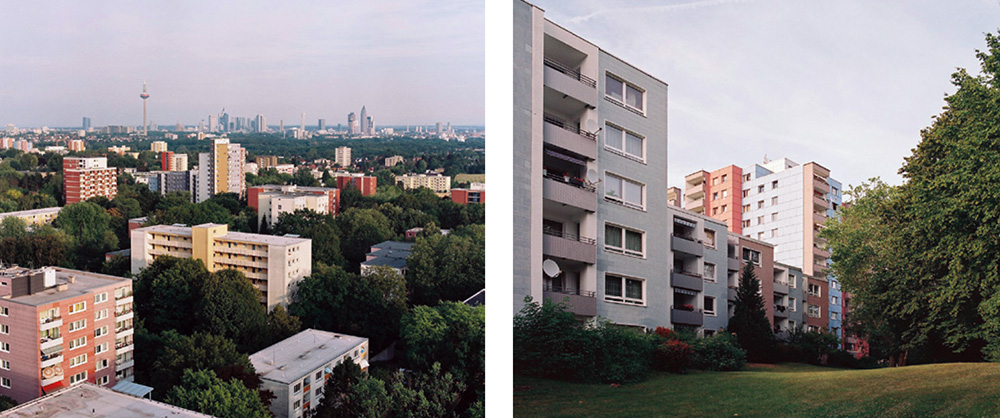Perceptions, Values, and Preconceptions of Large-scale Post-war Housing Estates
Additional Files
DOI:
https://doi.org/10.52200/docomomo.68.10Keywords:
Mass housing, Social Housing, Germany, heritage listing, Post-war housingAbstract
Large-scale housing estates were the most significant and largest single investments implemented in many municipalities in the post-WWII period. They were emblematic of modern urban development until criticism of modern housing became widespread and reached Western Germany in the wake of the fundamental socio-critical movements shaking Europe around 1968. This criticism primarily reflected the voice of middle-class academics, who fed it into the media as well as into the architecture and planning discourse, which continues to dominate to these days. We will argue that this criticism stands in the way of recognizing large-scale housing estates as important testimonies of post-WWII history worthy of preservation. In times of tight housing markets, this criticism also enables significant alterations to the estates’ urban fabric as well as densification to generate additional homes without incurring land costs. As a result, we currently risk even the outstanding examples being altered beyond their ability to function as cultural monuments. This paper combines literature, archive material and extensive surveys of large-scale post-WWII housing estates in the Frankfurt Rhine-Main region to trace the changing perception of this housing type over time and its implications for the formal listing process. Whilst the current German legislation allows for the best specimens of large-scale post-WWII housing estates to be listed but factors outside the professional field prevents the authorities in charge from doing so. At the same time the benefits of listing would extend beyond the realm of building preservation to include better acceptance within the general public and improved identification for the residents. Two examples from the Rhine-Main Region will exemplify the challenges related to the preservation of large-scale housing estates.
How to Cite
Published
Issue
Section
License
Copyright (c) 2023 Maren Harnack, Natalie Heger

This work is licensed under a Creative Commons Attribution 4.0 International License.
Plaudit
References
BLAKE, P. (1977): Form Follows Fiasko. Why Modern Architecture Hasn‘t Worked. Boston/Toronto: Little, Brown and Company.
CONRADS, U. (1974): Umwelt Stadt. Argumente und Lehrbeispiele für eine humane Architektur. Reinbek bei Hamburg: Rohwolt.
DEUTSCHER BUNDESTAG, Drucksache 12/8406: Unterrichtung durch die Bundesregierung. Großsiedlungsbericht 1994. Bonn, 30 August 1994
FELSCHERINOW, C. et al. (2009 [1978]): Wir Kinder vom Bahnhof Zoo. Hamburg: Gruner & Jahr.
FRANZ, B. & MEIER, H.-R. (Eds.) (2011). Stadtplanung nach 1945. Zerstörung und Wiederaufbau. Denkmalpflegerische Probleme aus heutiger Sicht, Holzminden: Mitzkat, pp. 22–29.
HARNACK, M. et al. (2020). Wohnen in der Nachkriegsmoderne. Siedlungen in der Region Rhein-Main. Berlin: Deutscher Kunstverlag
HEGEMANN, W. 1963 [1930]). Das steinerne Berlin. Basel: Birkhäuser
HOPFNER, K. (Ed.) (2012). größer höher dichter. Wohnen in Siedlungen der 1960er und 1970er Jahre in der Region Stuttgart. Stuttgart: Karl Krämer Verlag.
KRÜGER, S. (Ed.) (2014). Armutszeugnisse. Westberlin vor der Stadtsanierung in den sechziger Jahren. Fotografien von Heinrich Kuhn. Berlin: Edition Braus.
LEHMBROCK, J. (Ed.) (1971). Profitopolis oder: Der Mensch braucht eine andere Stadt. München (Ausstellungskatalog).
MASLOW, A. (1943). A theory of human motivation. In: Psychological Review 50, 370-396. http://psychclassics.yorku.ca/Maslow/motivation.htm (accessed 16.8.2018). DOI: https://doi.org/10.1037/h0054346
MAY, E. (1963). Das neue Wiesbaden. Wiesbaden: City of Wiesbaden
MEADOWS, D. et al. (1974). The Limits to Growth. A Report for the Club of Rome‘s Project on the Predicament of Mankind. New York: Universe Books.
MITSCHERLICH, A. (1965). Die Unwirtlichkeit unserer Städte. Eine Anstiftung zum Unfrieden. Frankfurt am Main: Suhrkamp.
MÜLLER-RAEMISCH, H.-R. (1998). Frankfurt am Main. Stadtentwicklung und Planungsgeschichte seit 1958. Frankfurt am Main / New York: Campus.
RECKWITZ, A. (2012). Die Erfindung der Kreativität. Zum Prozess gesellschaftlicher Ästhetisierung. Berlin: Suhrkamp.
SCHWAGENSCHEIDT, W. (1949). Die Raumstadt. Reprint in der Originalgröße der Ausgabe von 1949. Weimar: 2013
SCHWAGENSCHEIDT, W. (1964). Die Nordweststadt. Idee und Gestaltung. Stuttgart: Karl Krämer Verlag.
SCHULZE, G. (1992). Die Erlebnisgesellschaft. Kultursoziologie der Gegenwart. Frankfurt am Main / New York: Campus
SIEDLER, W. J. et.al. (1967 [1963]). Die gemordete Stadt. Abgesang auf Putte und Straße, Platz und Baum. Berlin u. a.: Herbig.
VEBLEN, T. (2013 [1902]). The Theory of the Leisure Class. www.gutenberg.org/ebooks/833, accessed April 7, 2023.
VINKEN, G. (2010). Zone Heimat. Altstadt im modernen Städtebau. Berlin: Deutscher Kunstverlag
WELZBACHER, C. in conversation with Dieter Hoffmann-Axthelm (2009). Die katastrophale Utopie. Planungswirtschaft und Sozialdogmatismus. In Braum, M. & Welzbacher, C. (Eds.). Nachkriegsmoderne in Deutschland. Eine Epoche weiterdenken. Berlin: Jovis, 36-51 DOI: https://doi.org/10.1007/978-3-0346-0374-4_4
WOLFE, T. (2009 [1981]). From Bauhaus to Our House. New York: Picador.





